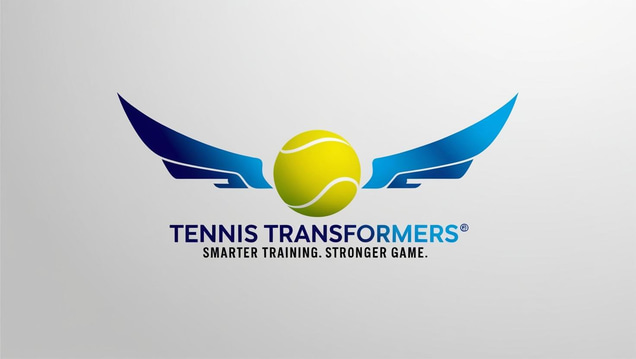Enhance Tennis Performance with Yoga Training
Discover how yoga can transform your tennis game by enhancing agility, strength, and mental resilience. Learn about injury prevention and peak performance strategies for tennis players through effective yoga practices.
EXERCISE & FITNESS
3/8/20253 min read


How Yoga Can Improve Your Tennis Game
Tennis is a demanding sport that requires agility, strength, flexibility, endurance, and mental resilience. While many players focus on traditional training methods such as drills, weightlifting, and cardio workouts, an increasing number of athletes are turning to yoga as a secret weapon for improving their game. Yoga provides a unique combination of physical and mental benefits that can significantly enhance a tennis player’s performance on the court. In this blog, we’ll explore how yoga can help tennis players improve their game, prevent injuries, and achieve peak performance.
1. Enhances Flexibility and Range of Motion
Flexibility is crucial in tennis, as players frequently stretch, twist, and lunge to reach balls at awkward angles. A lack of flexibility can lead to muscle strain and limit your ability to execute powerful and controlled strokes. Yoga poses like Downward Dog, Pigeon Pose, and Cobra Pose help elongate muscles, improve range of motion, and reduce stiffness, allowing for better movement and shot execution on the court.
2. Strengthens Core Stability and Balance
A strong core is essential for powerful shots and quick movements in tennis. Yoga strengthens the core muscles through poses like Boat Pose, Plank, and Warrior Poses, which help stabilize the body during rapid direction changes. Improved balance from yoga also helps with shot accuracy and prevents unnecessary falls or missteps during intense rallies.
3. Improves Breathing and Endurance
Tennis matches can be long and grueling, requiring excellent stamina and controlled breathing. Many yoga practices incorporate pranayama (breathing techniques) that enhance lung capacity and oxygen efficiency. Learning to control your breath through deep breathing exercises like Ujjayi Pranayama can help regulate energy levels, reduce fatigue, and keep you calm under pressure.
4. Prevents Injuries and Speeds Up Recovery
One of the biggest benefits of yoga for tennis players is injury prevention. Tennis involves repetitive motions that put stress on joints, tendons, and muscles, leading to common injuries like tennis elbow, shoulder impingement, and lower back pain. Yoga’s emphasis on stretching and muscle engagement helps prevent these injuries by maintaining flexibility and strengthening supporting muscle groups. Additionally, post-match yoga sessions aid in muscle recovery, reducing soreness and inflammation.
5. Increases Mental Focus and Resilience
Tennis is as much a mental game as it is a physical one. Concentration, emotional control, and staying composed under pressure are essential for success. Meditation and mindfulness practices in yoga train the mind to stay present, block distractions, and improve overall focus. Practices like Yoga Nidra and guided meditation can help players develop mental resilience, maintain confidence, and recover quickly from setbacks during a match.
6. Boosts Agility and Coordination
Quick reflexes and coordinated movements are key components of a strong tennis game. Yoga enhances proprioception (awareness of body positioning) through balancing poses like Tree Pose and Eagle Pose. This heightened body awareness translates to better reaction times, improved footwork, and enhanced coordination during rallies and net play.
7. Aids in Stress Reduction and Relaxation
Competitive tennis can be stressful, especially during high-stakes matches or tournaments. The calming effects of yoga help players manage stress and anxiety. Practices like Yin Yoga and restorative yoga activate the parasympathetic nervous system, reducing cortisol levels and promoting relaxation. This helps players stay composed and perform at their best without succumbing to nervous energy.
8. Develops Better Posture and Alignment
Poor posture can lead to inefficient movements and increase the risk of injury. Tennis players often develop muscular imbalances due to dominant-side usage. Yoga helps correct posture issues by promoting proper spinal alignment and muscle symmetry. Poses like Mountain Pose, Bridge Pose, and Cat-Cow encourage players to maintain good posture both on and off the court.
9. Encourages Longevity in the Sport
Many tennis professionals, including Novak Djokovic and Andy Murray, have incorporated yoga into their training routines to extend their careers. By improving flexibility, reducing injuries, and enhancing overall well-being, yoga allows players to maintain peak physical condition and continue playing at a high level for longer.
How to Incorporate Yoga into Your Tennis Routine
If you’re new to yoga, start with a few simple poses and gradually increase the duration and intensity. Here’s how you can integrate yoga into your training regimen:
Pre-match warm-up: Practice dynamic yoga stretches to prepare your muscles and joints for movement.
Post-match recovery: Use restorative yoga poses to aid muscle recovery and prevent stiffness.
Off-day practice: Dedicate a full yoga session to improve flexibility, balance, and mental focus.
Daily mindfulness: Incorporate breathing exercises and meditation to enhance mental clarity and stress management.
Conclusion
Yoga is a game-changer for tennis players looking to elevate their performance and maintain long-term physical and mental well-being. By improving flexibility, strength, endurance, mental focus, and injury prevention, yoga provides a well-rounded approach to enhancing your tennis skills. Whether you’re a beginner or a seasoned pro, adding yoga to your routine can help you move better, think sharper, and stay resilient on the court. So, roll out your yoga mat and start experiencing the benefits today!
©2025 Tennis Transformers. All rights reserved
Disclosure
This website contains affiliate links. If you purchase through these links I may earn a small commission at no extra cost to you. I only recommend products I believe add value to you. This helps support my work and allows me to continue providing valuable content. Thank you for your support!
